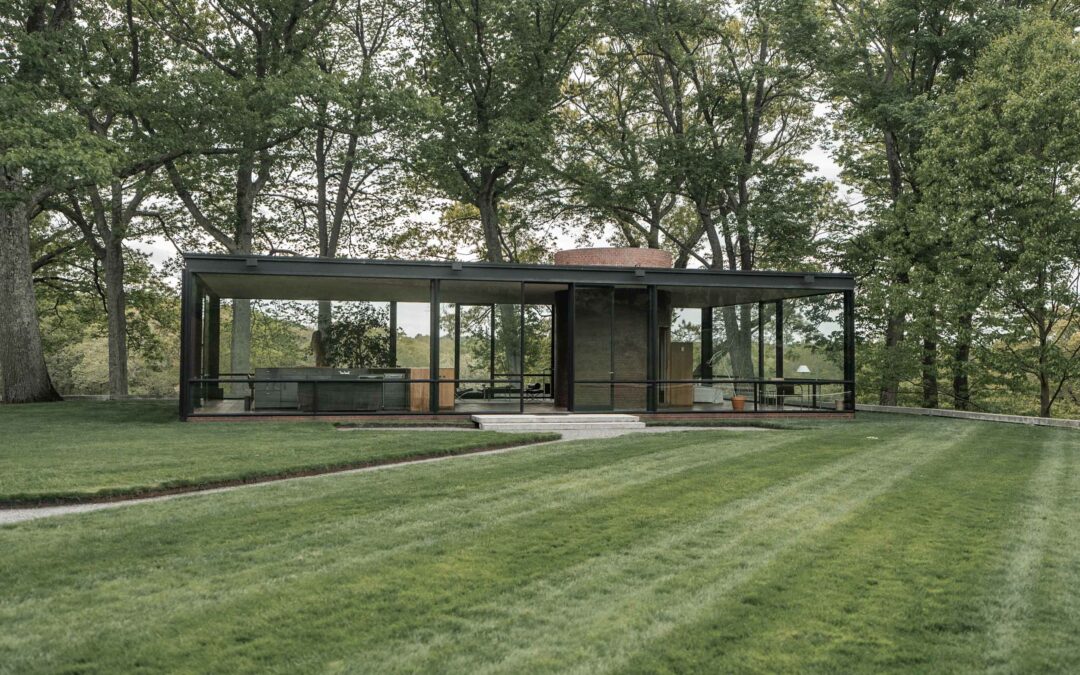about Philip Johnson
Philip Johnson is an American architect who is known for his promotion of the International Style and his role in defining postmodern architecture.
-
born July 8, 1906, in Cleveland, Ohio
-
died January 25, 2005, New Canaan, Connecticut)
The Glass House is located in New Canaan, Connecticut, and it is his private residence where he built and lived until his death. His New Canaan estate also featured other structures, including an art gallery and a sculpture pavilion which I did not get to see. The tour I booked was the 1-hour $30 weekend-price Glass House tour and the newly renovated and now open-for-viewing Brick House.
Tour options
TICKETS MUST BE BOOKED IN ADVANCE: HERE
There might be last-minute cancellations, but I don’t recommend coming without a reservation if you have to travel some distance in.
Tour options are listed below. I did the 1-hour $30 session at 3:45 pm, the last tour of the day, on Saturday, May 11th, 2024.
-
GLASS HOUSE TOUR (1 HOUR) – $25 weekday / $30 weekend
-
GLASS HOUSE + GALLERIES TOUR (2 HOURS) – $50 weekdays / $60 weekends and holidays
-
EXTENDED TOUR (2 1/2 HOURS) – $85 weekdays / $100 weekends and holidays
-
SELF-GUIDED TOUR (UP TO 3 HOURS) – $50, not available in November or December
-
PRIVATE TOUR (UP TO 3 HOURS) – $250 per person
-
GROUP TOUR (BY APPOINTMENT) and IN-DEPTH TOUR (3 HOURS) – $100 weekdays / $120 weekends and holidays
Getting to the Glass House
From New York, it takes about 1.5 – 2 hours to get to the Glass House Visitor Center by car or train.
- Must arrive at the Visitor Center + Design Store to check in – Address: 199 Elm Street, New Canaan CT, 06840.
Editor tip: I’d avoid being late due to the traffic coming out of NYC, especially on the weekends, by going early.
I visited Grace Farms for the second time before heading over to the Glass House. Grace Farms is free to visit, and I think it’s absolutely worth spending at least 2 hours there!
Note that there’s free parking at the train station across the street from the Visitor Center. After checking in, you will be traveling with other people within your time slot in a van with the tour guide to the estate. No large bags or food allowed on tour.
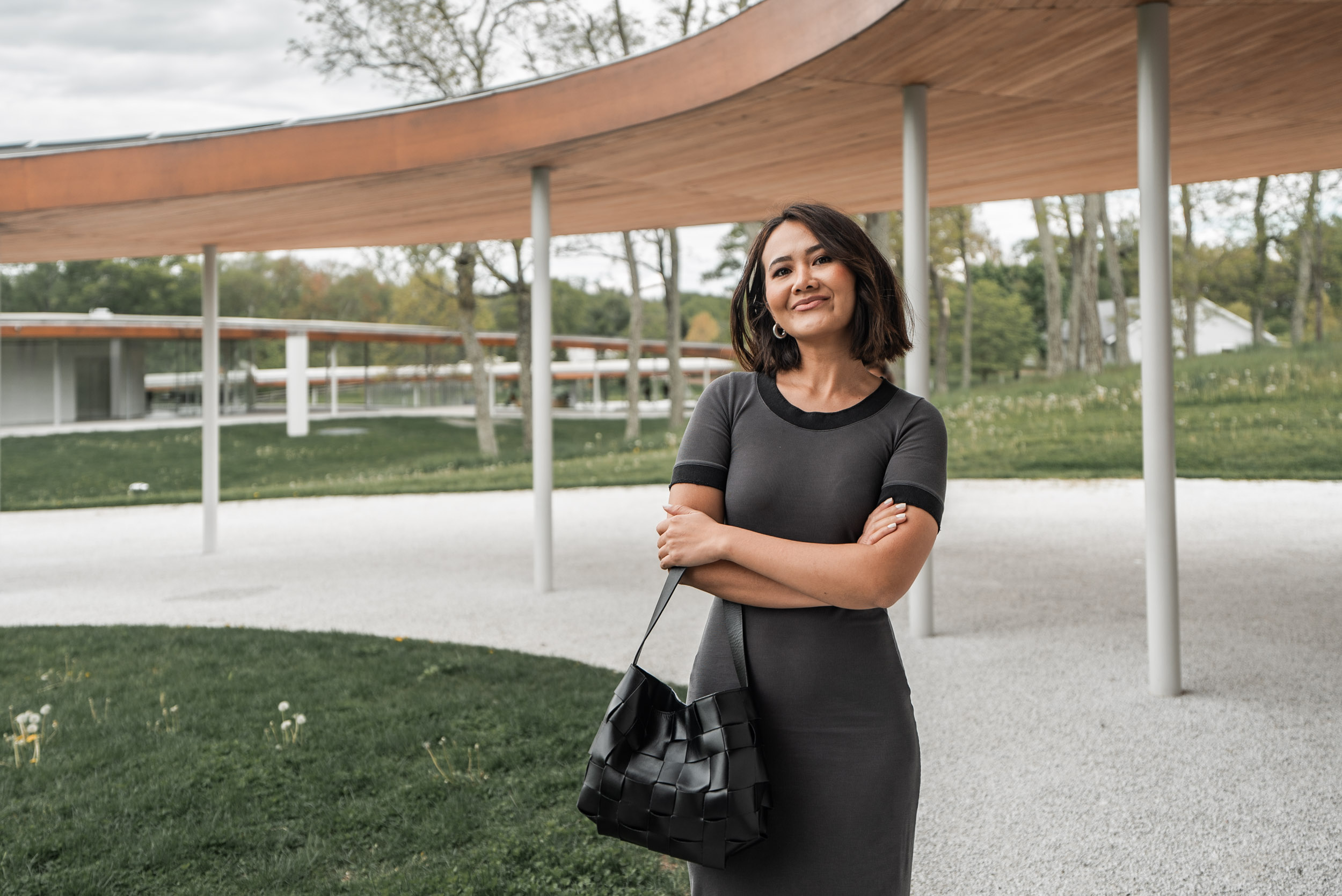
1. GRACE FARMS
Grace Farms, free admission, is only 10 minutes away from the Glass House, by car.
- Address: 365 Lukes Wood Road, New Canaan, CT 06840
This time, I got to go inside the amphitheater and walked the entire path of the River Building. River Building is designed by an award-winning Japanese architecture firm, called SANAA.
When you’re there, you have to grab some tea as tea time is often always performed by one of Grace Farms’ staff. You can purchase books from the library. If you’re hungry, there’s also a cafe which serves coffee, bakery and food. Don’t forget to ask about daily programs, speeches, or workshops, and check out any current art exhibitions.
-
The Sanctuary is a 700-seat amphitheater.
-
The Commons is a community gathering space.
-
The Pavilion is where you get the tea from.
-
The Court is a recreational and performance space.
Similar to the Glass House, Grace Farms is known for its architecture (The River building) and its landscape nature-focused design. I love going there because it’s a nice little retreat from the busy city life in NYC.
I’ve been to Grace Farms once before – blog post here!
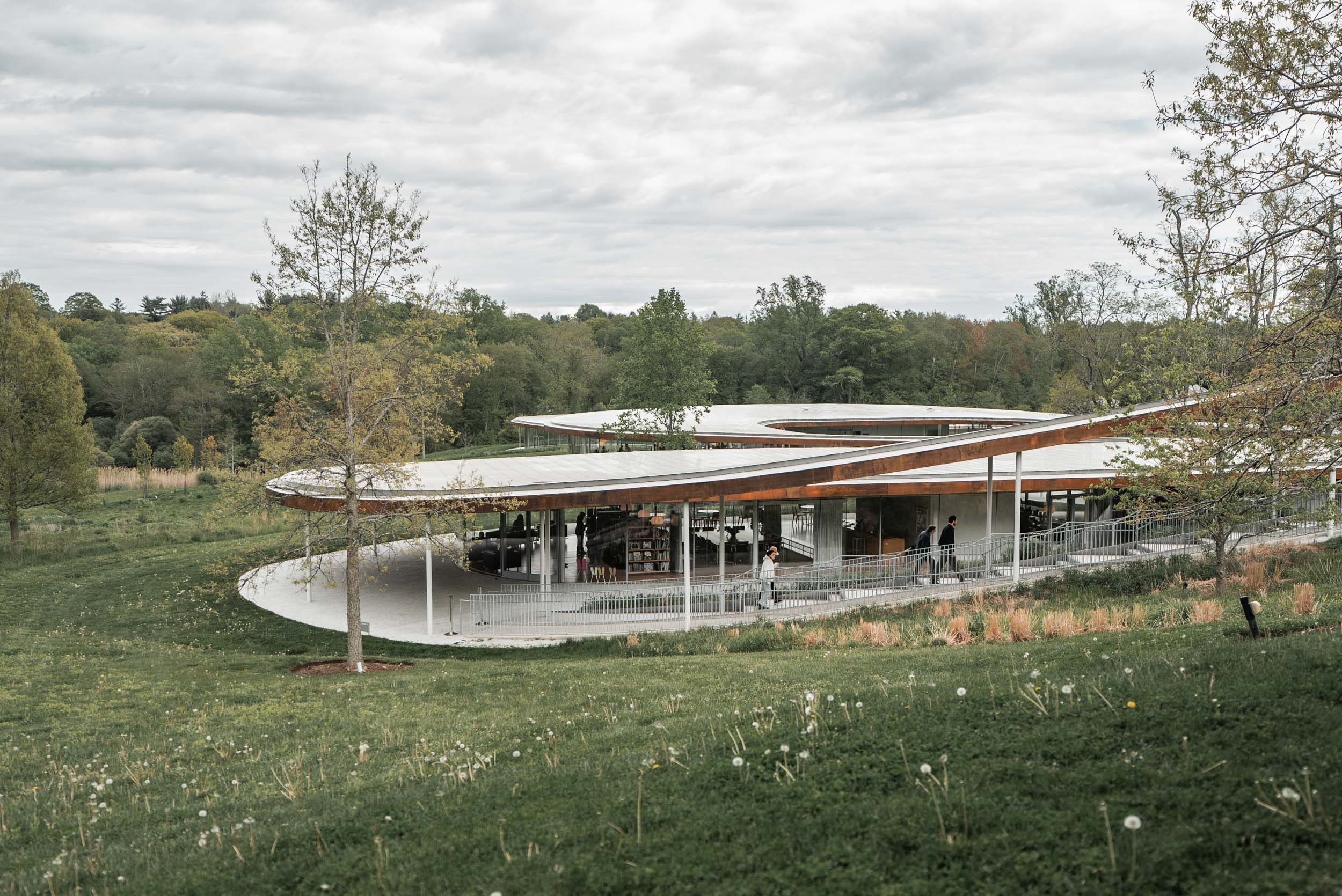

the amphiteatre
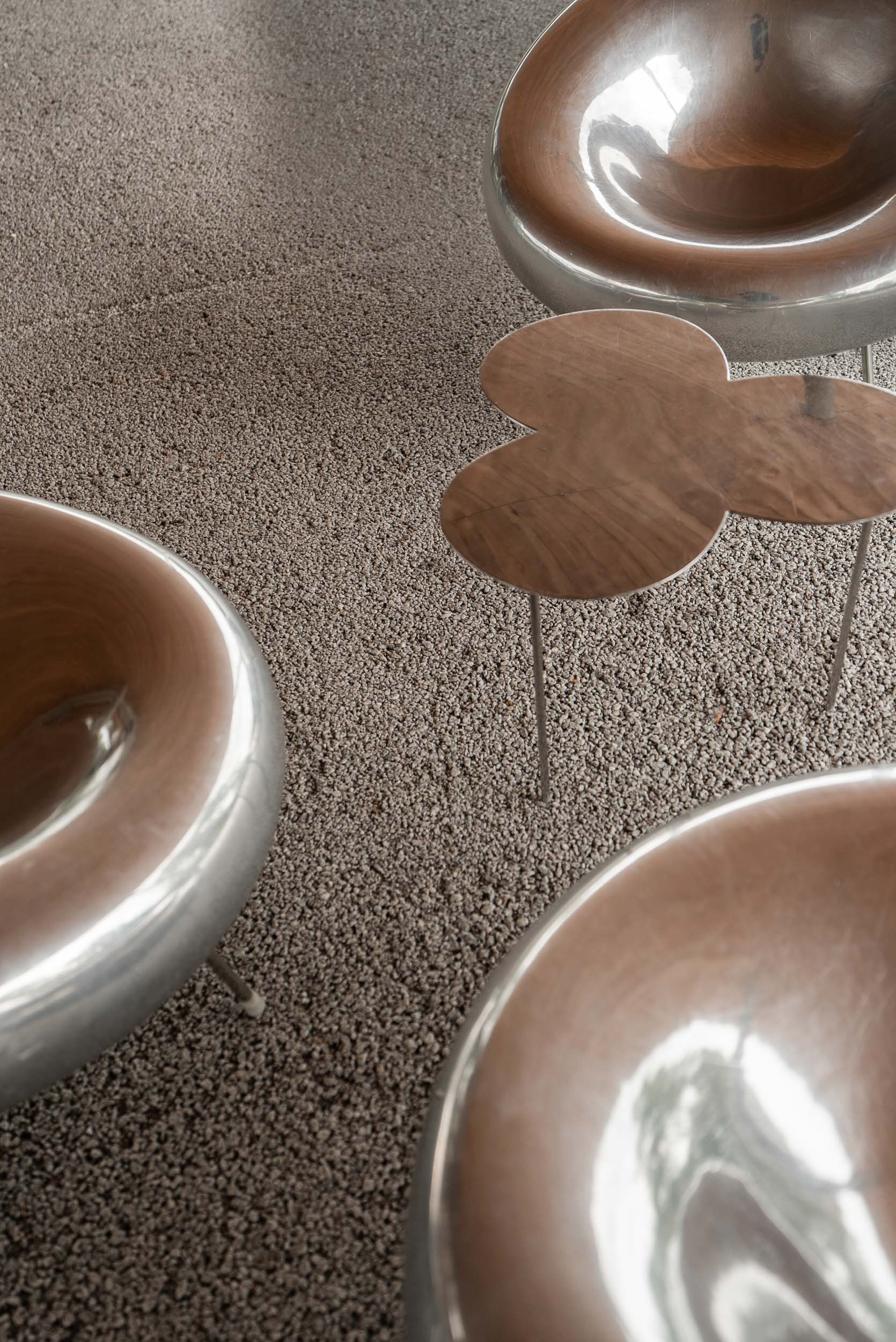
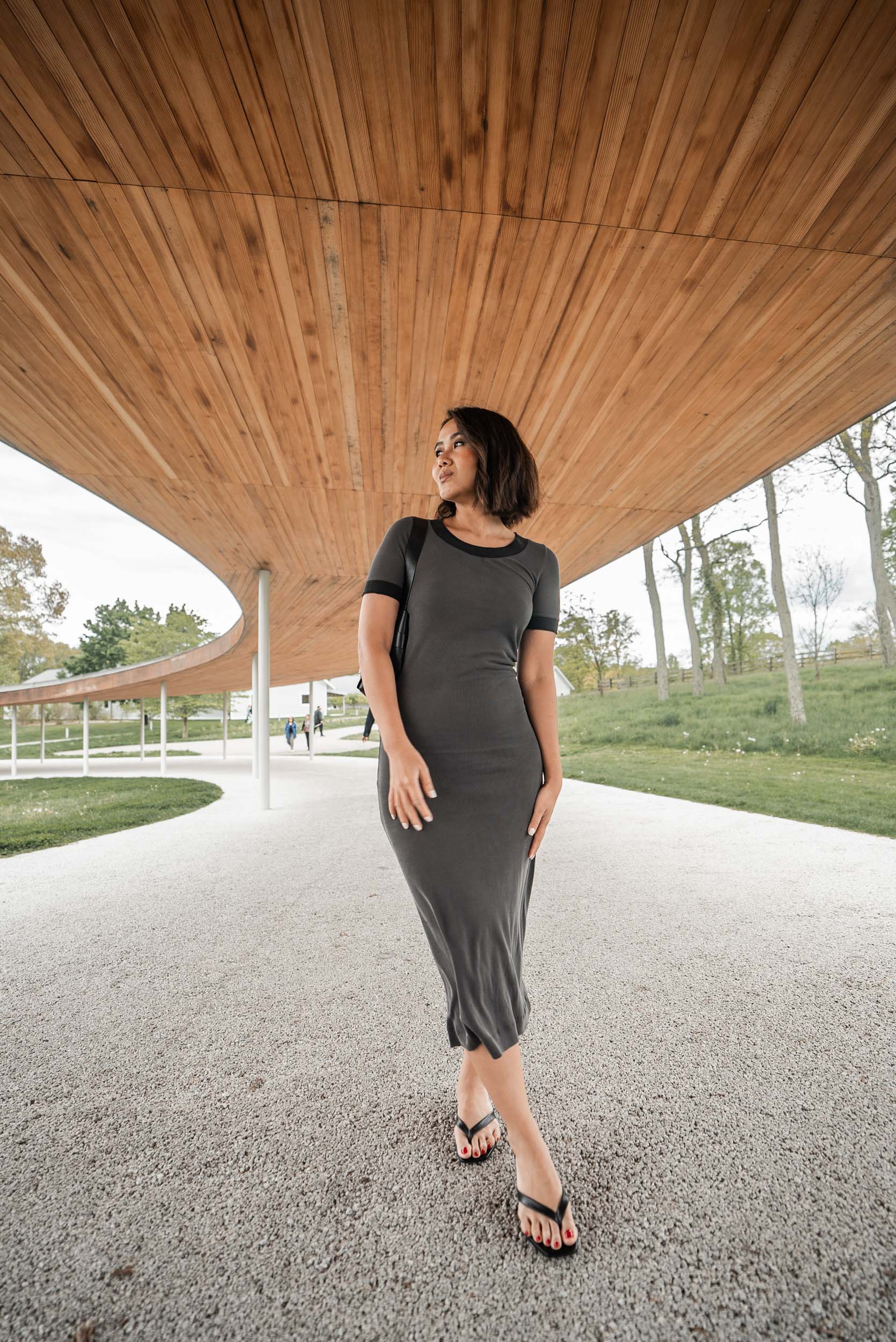
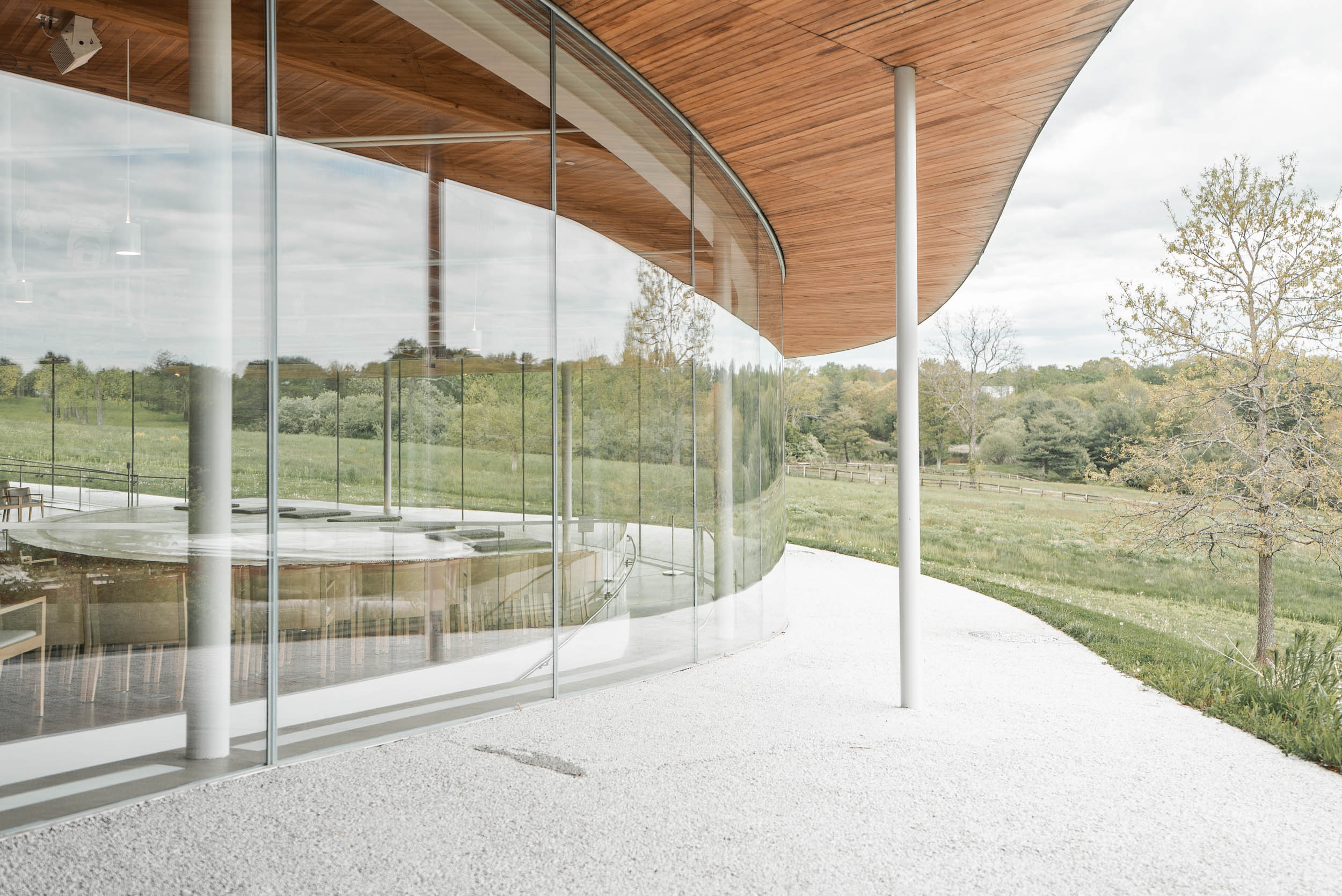
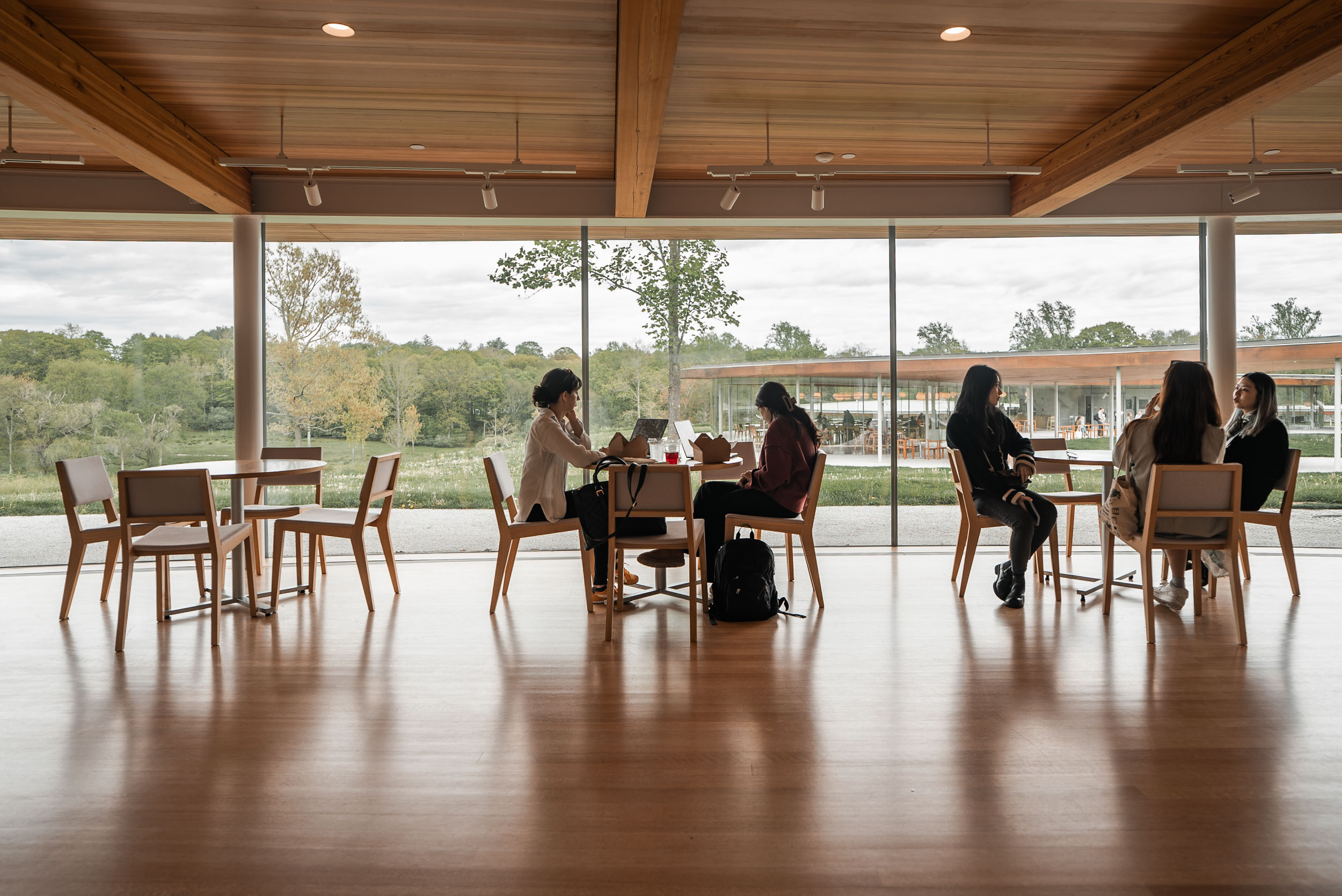
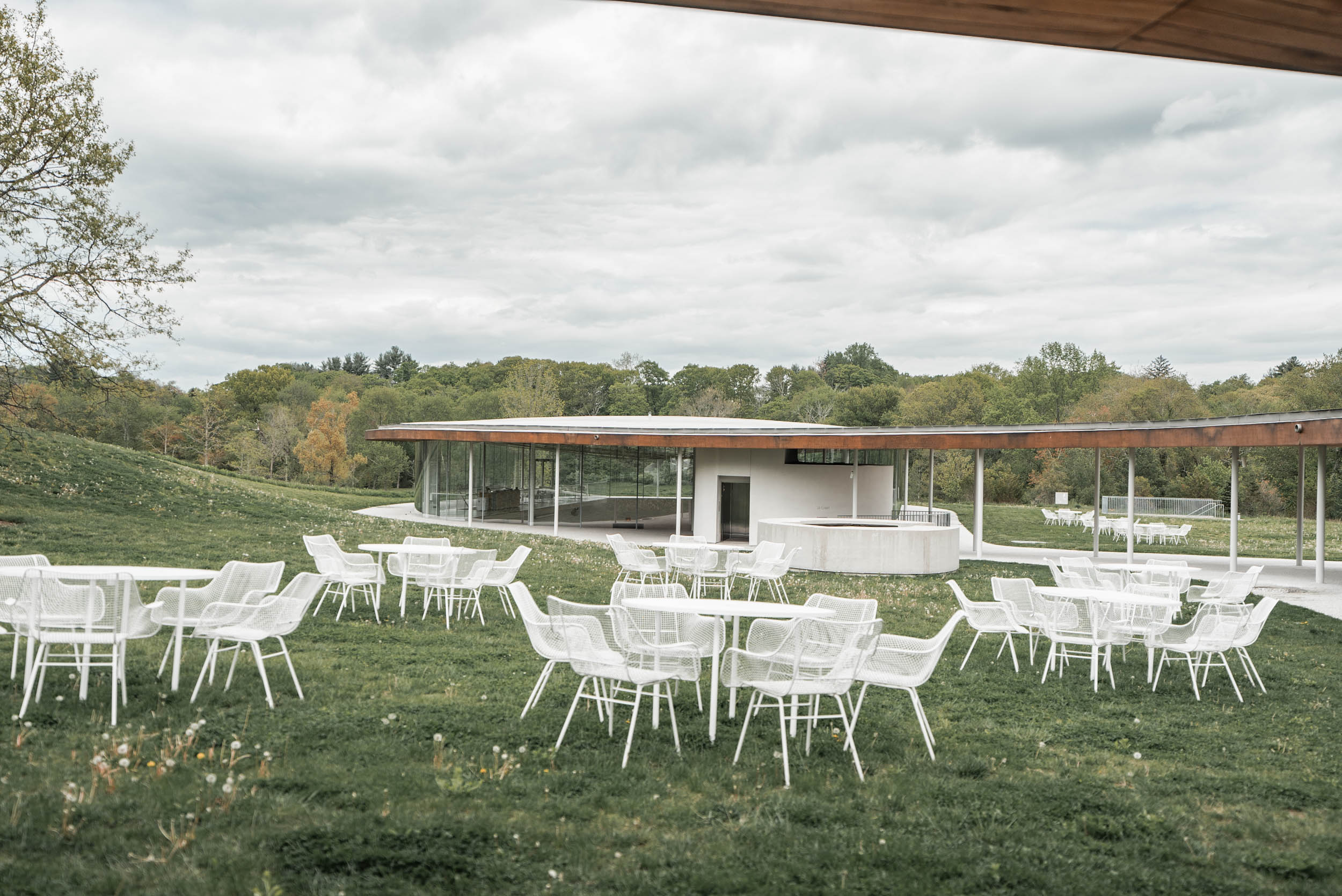
2. THE GLASS HOUSE, 1949
The Glass House is iconic because of its innovative use of materials (glass, steel, and brick – which was considered unusual at the time) and its seamless integration into the landscape.
Philip Johnson lived in the Glass House from 1949 until he died, in 2005.
My first reaction: I said that the Glass House was SMALL! Mary-Lou, our tour guide, did notice and said it was a lot of people’s reaction when they first stepped out of the tour van. It was not a negative comment, just a reaction or an observation because I had seen many photos of the Glass House in magazines and online before.
- Dimension: 55 ft long, 33 ft wide & 1,815 square ft
I also learned that the Glass House architecture style is called International Style which became popular in the 17th century. So think – the use of lightweight, mass-produced, and industrial materials (aka new materials at the time!), a modular system, and an open plan (loft-like space of the Glass House with no separate rooms, except the bathroom). The placement of furniture inside the Glass House is precise as it plays a huge role in making people feel like they’re in different rooms in the house.
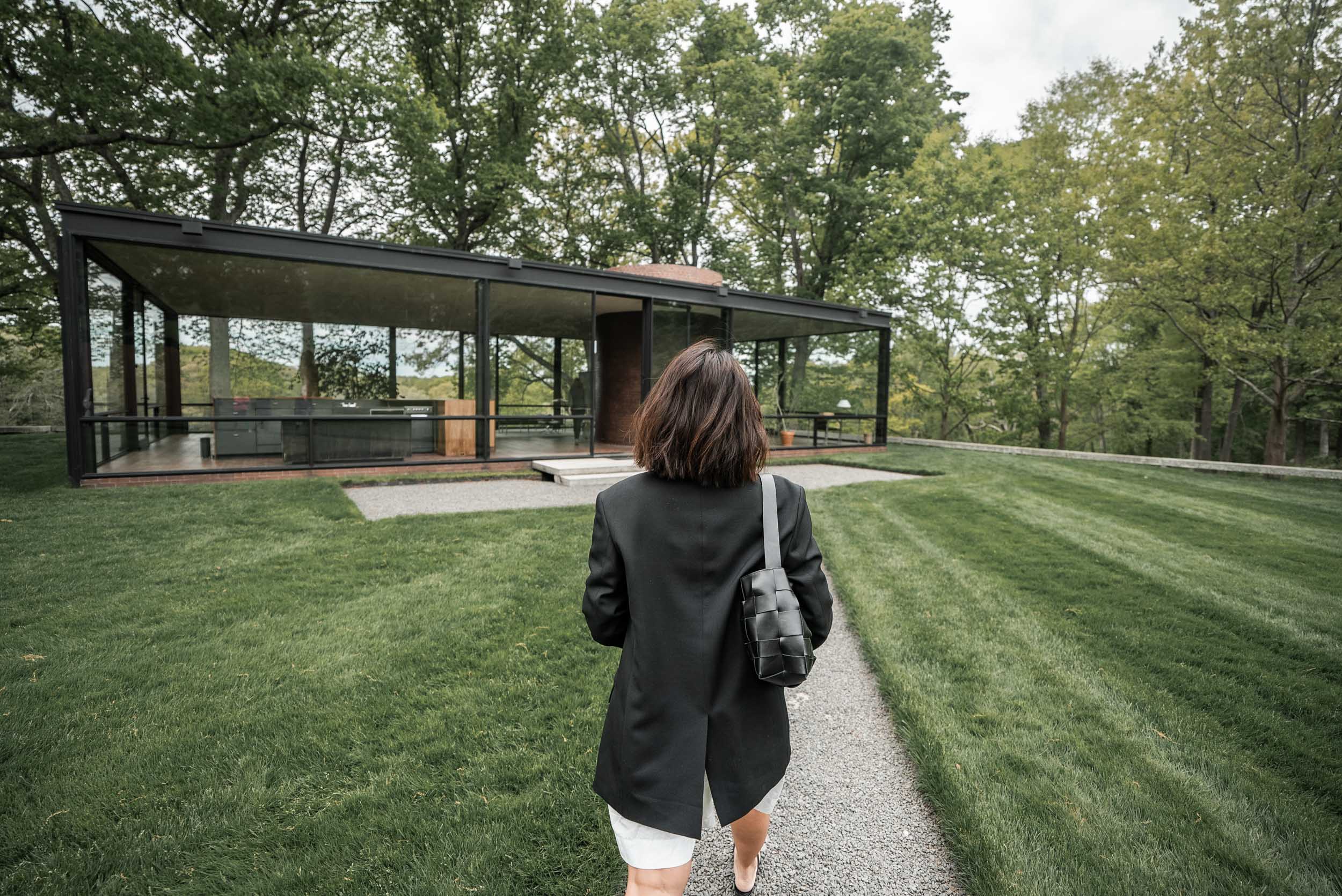
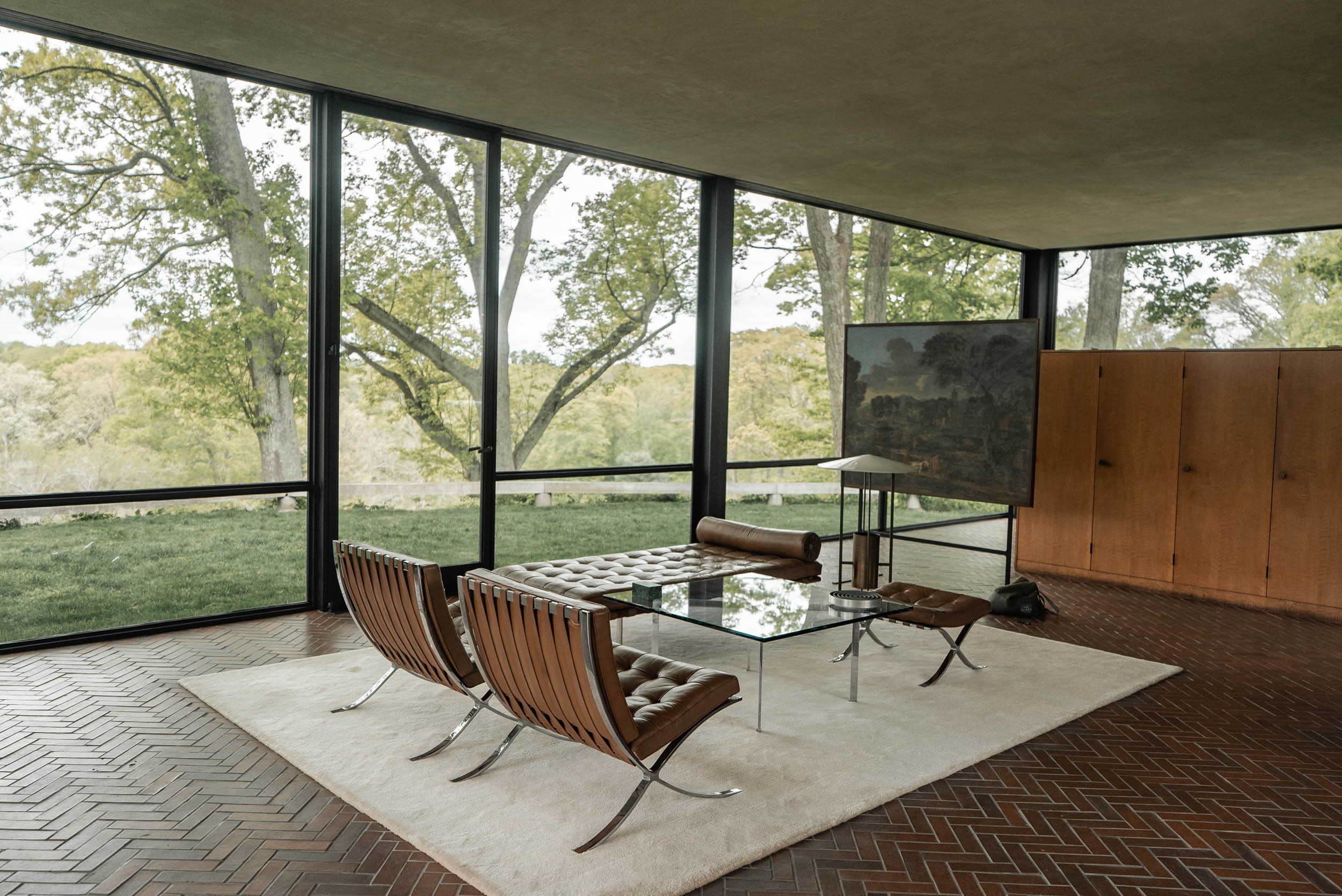
GLASS HOUSE LIVING AREA
FURNITURE:
1. by Ludwig Mies van der Rohe
Barcelona chair, 1929
Barcelona ottoman, 1929
Barcelona couch, 1930
Barcelona coffee table, 1930
2. by Philip Johnson and Richard Kelly – Floor lamp, 1954
3. by Philip Johnson – Fireplace Shield, 1951
4. by V’Soske Carpets, Inc. – Wool broadloom carpet
ART:
Burial of Phocion, a 17th-century landscape painting by Nicolas Poussin
& OTHER DECOR ITEMS – LEARN MORE HERE
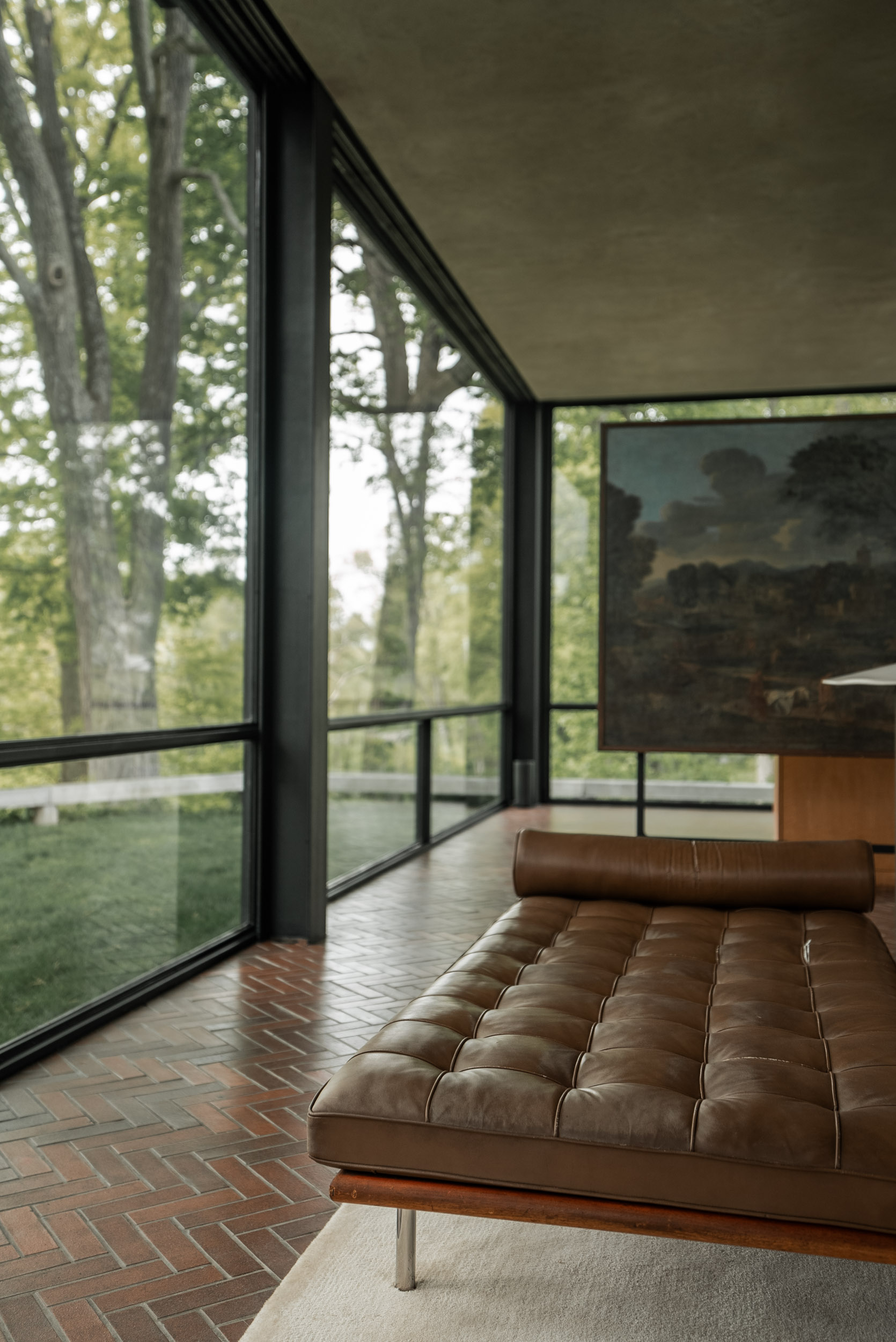
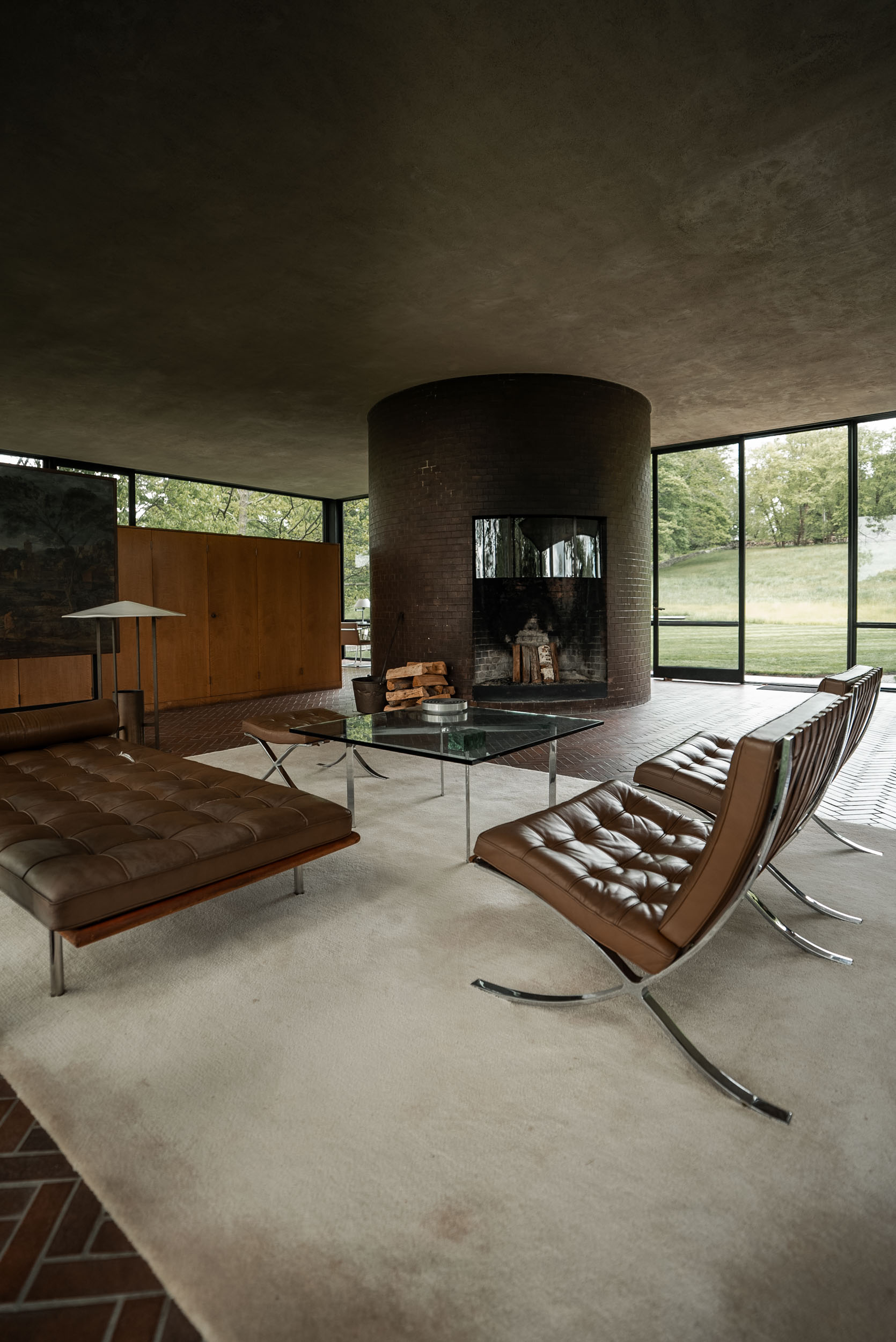
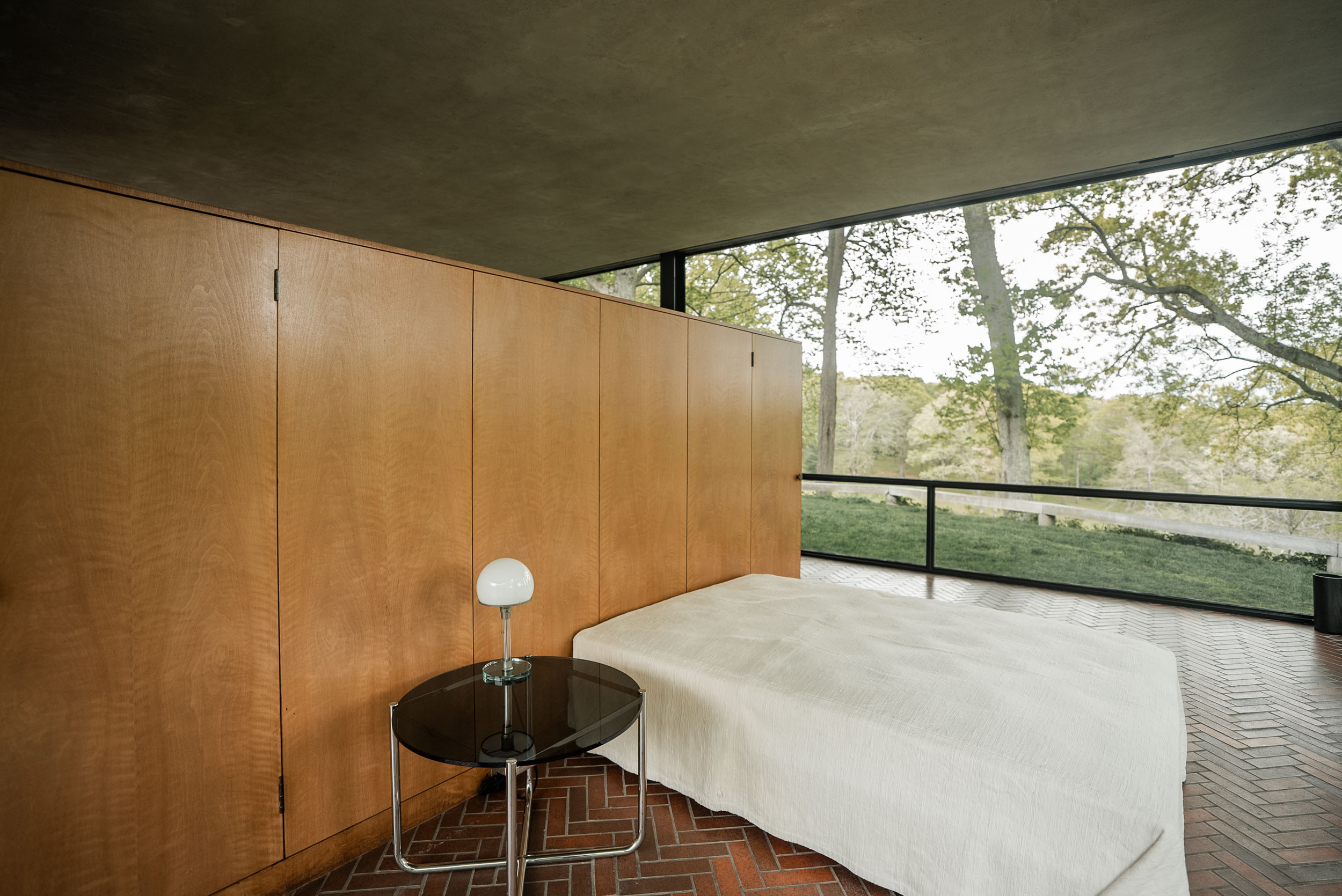
GLASS HOUSE BEDROOM
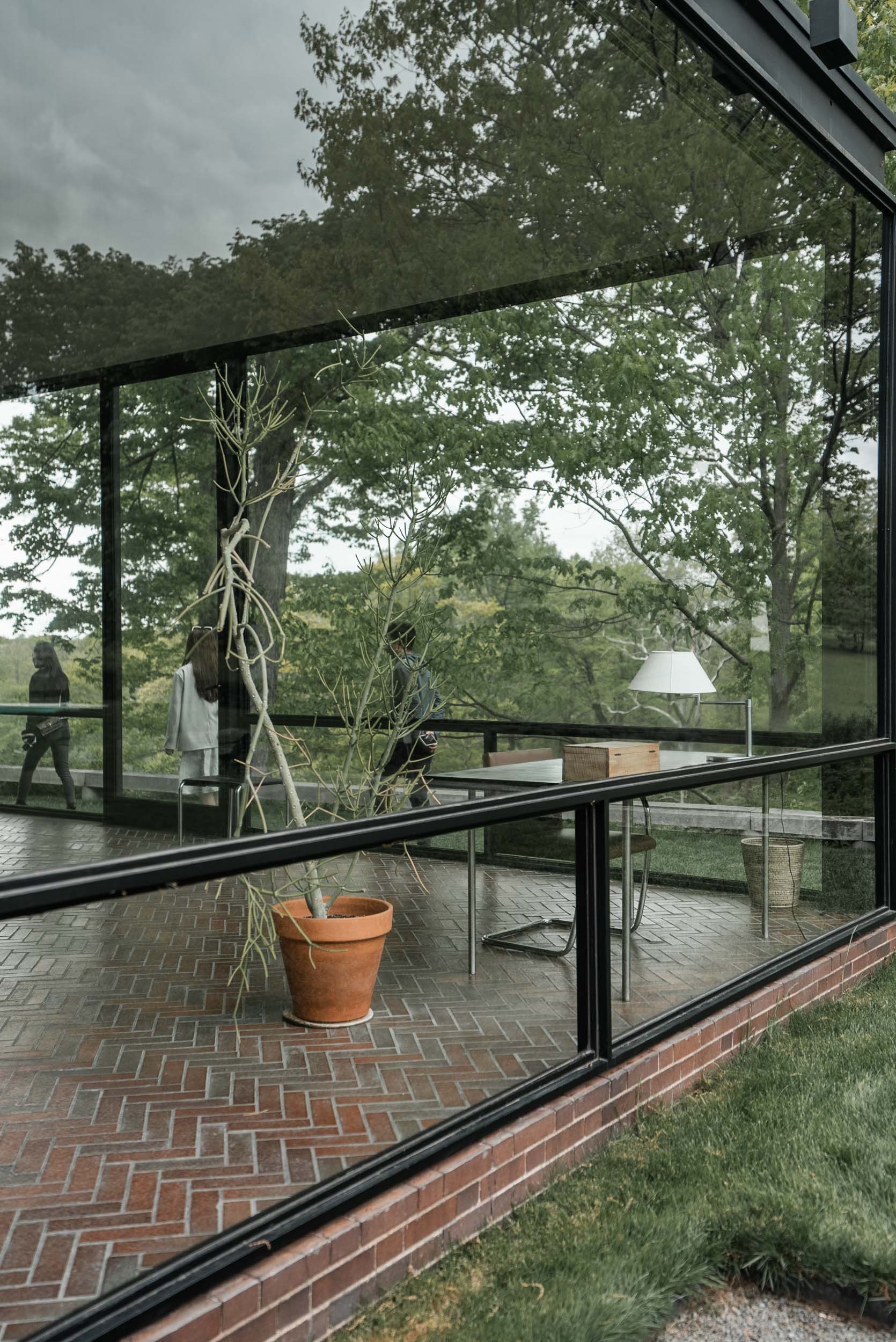
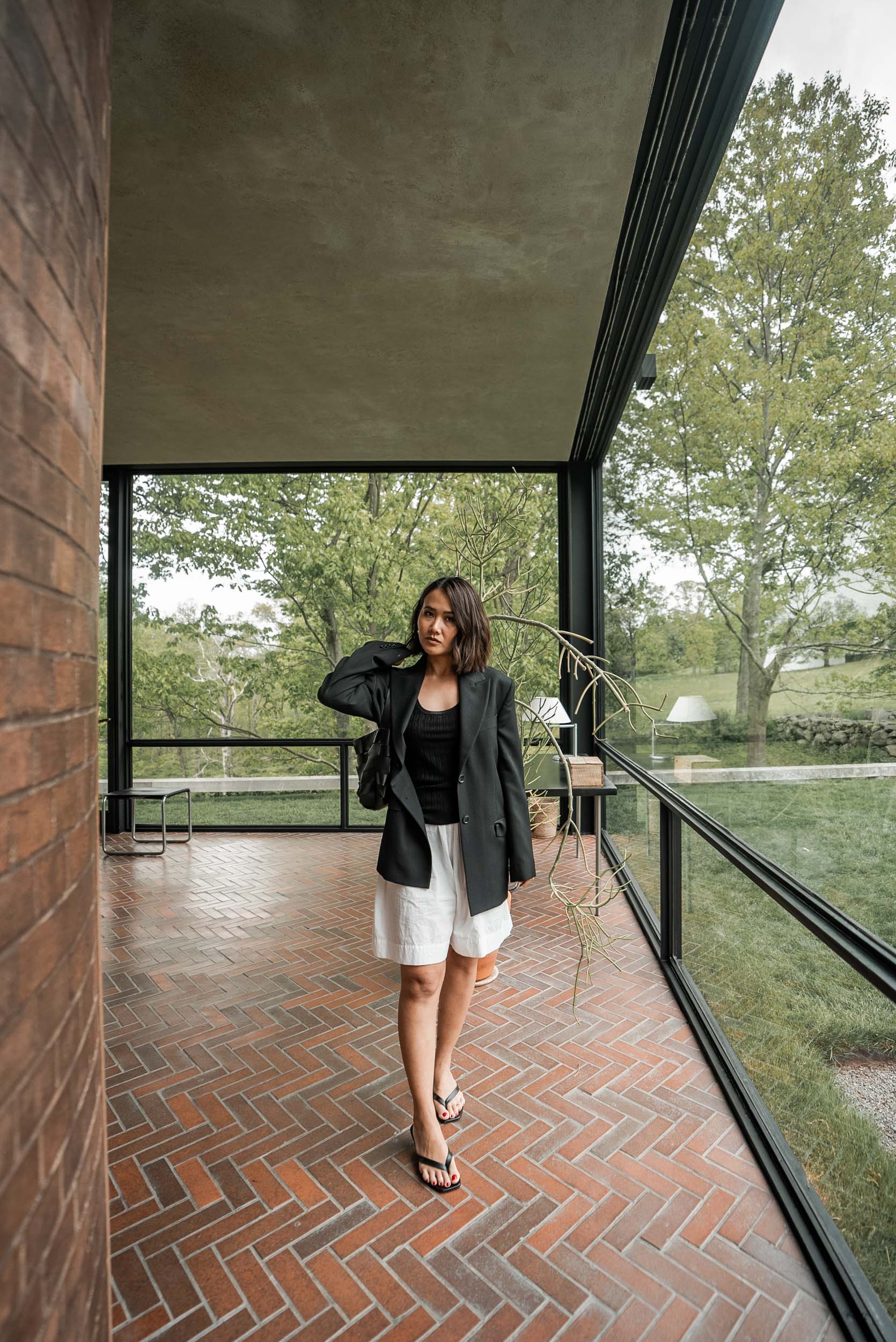
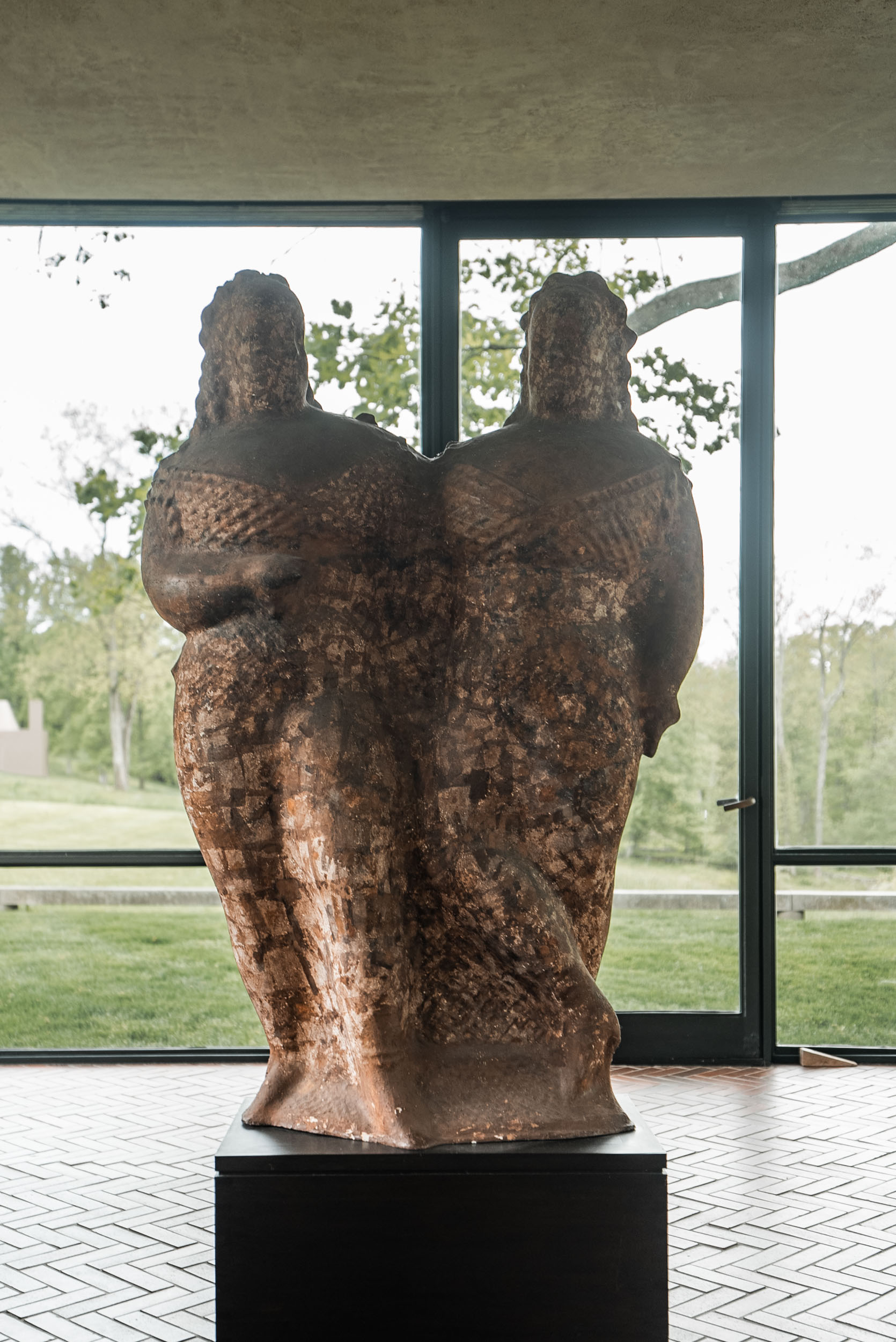
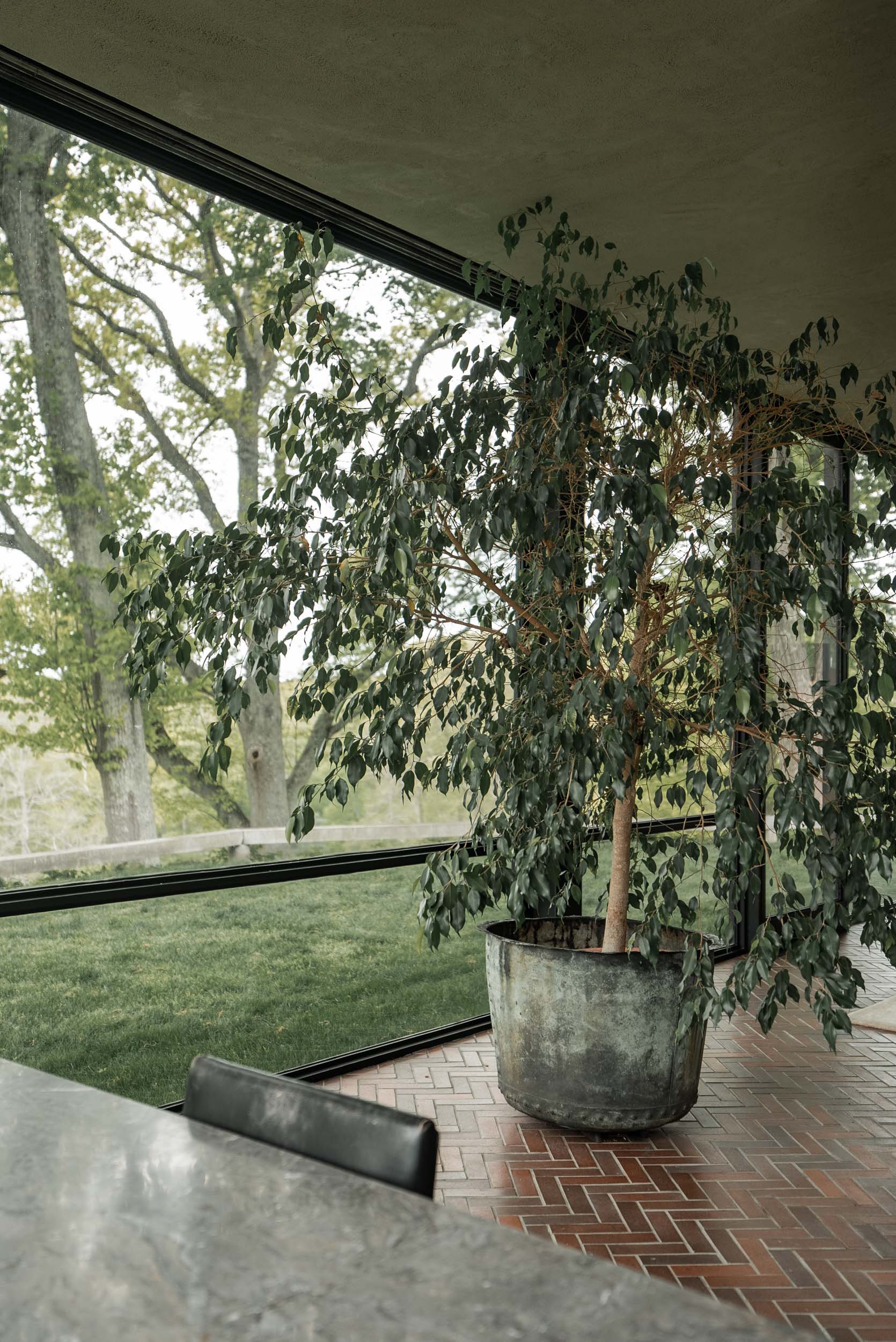
Two Circus Women sculpture by Elie Nadelman
fun fact: It is a small version of the marble sculpture in the lobby of the David H. Koch Theater at the Lincoln Center in NYC – HERE
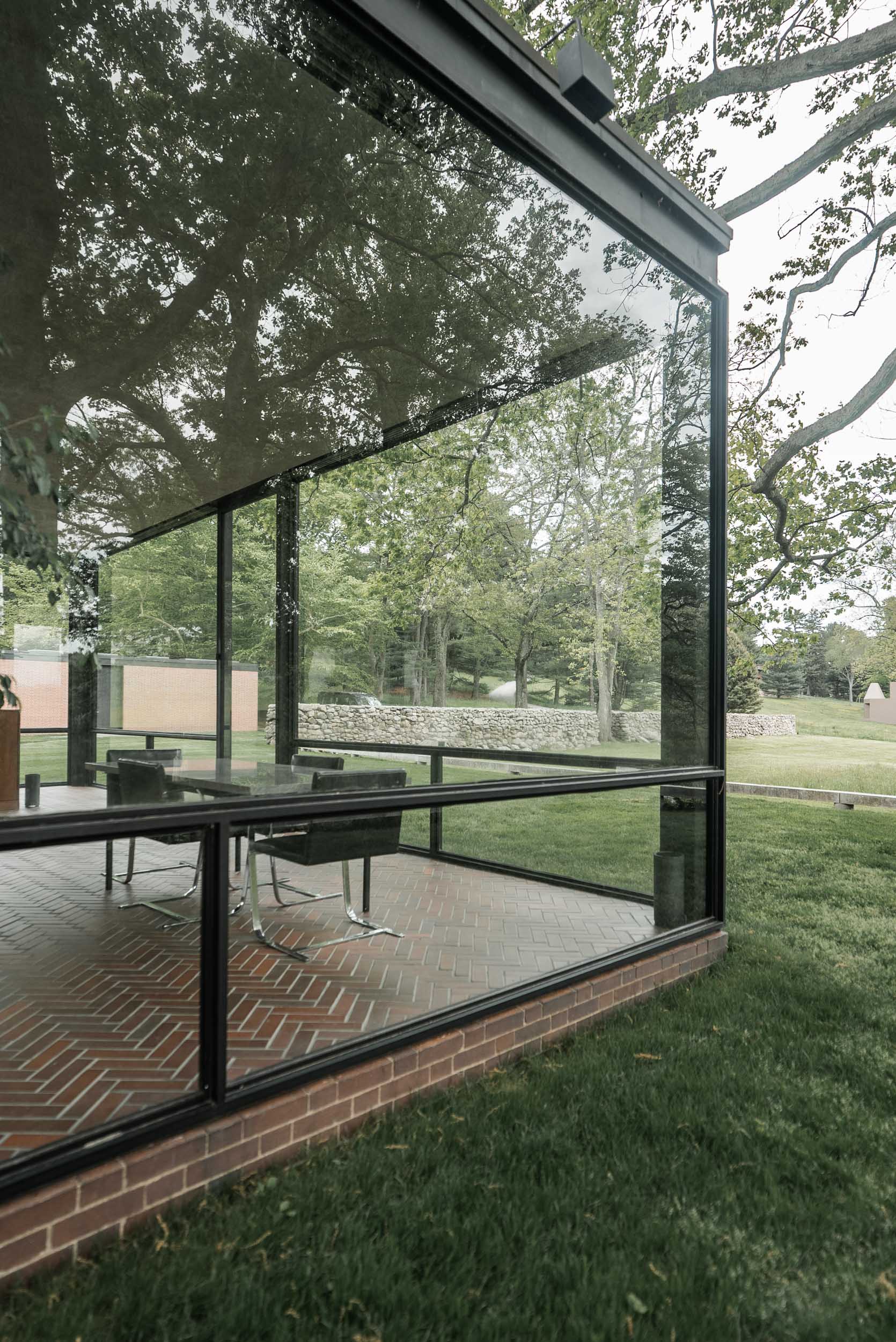
dining area – viewed from outside of the house
GLASS HOUSE DINING AREA
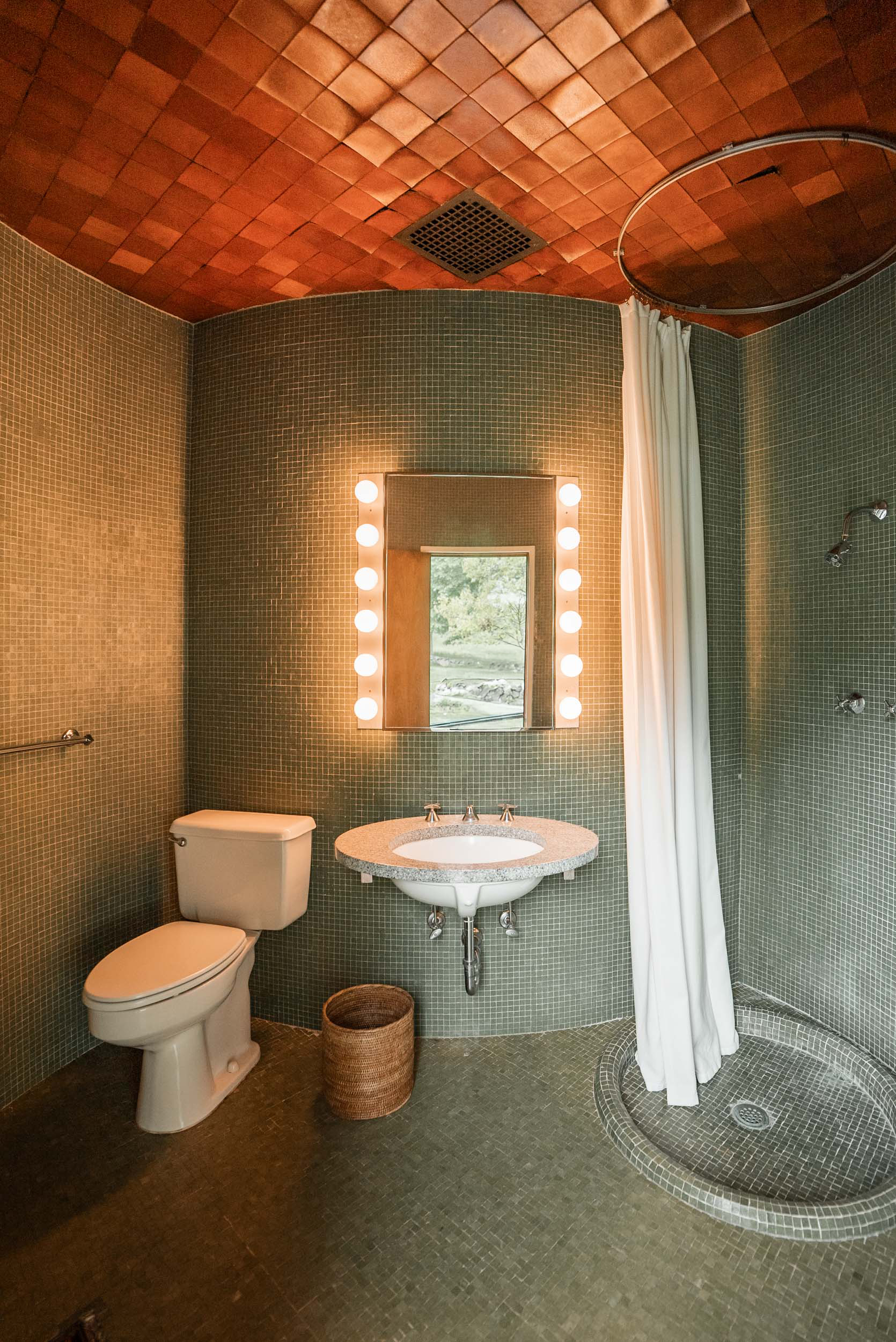

the bathroom – a tiny shower, a tiny sink, and a toilet
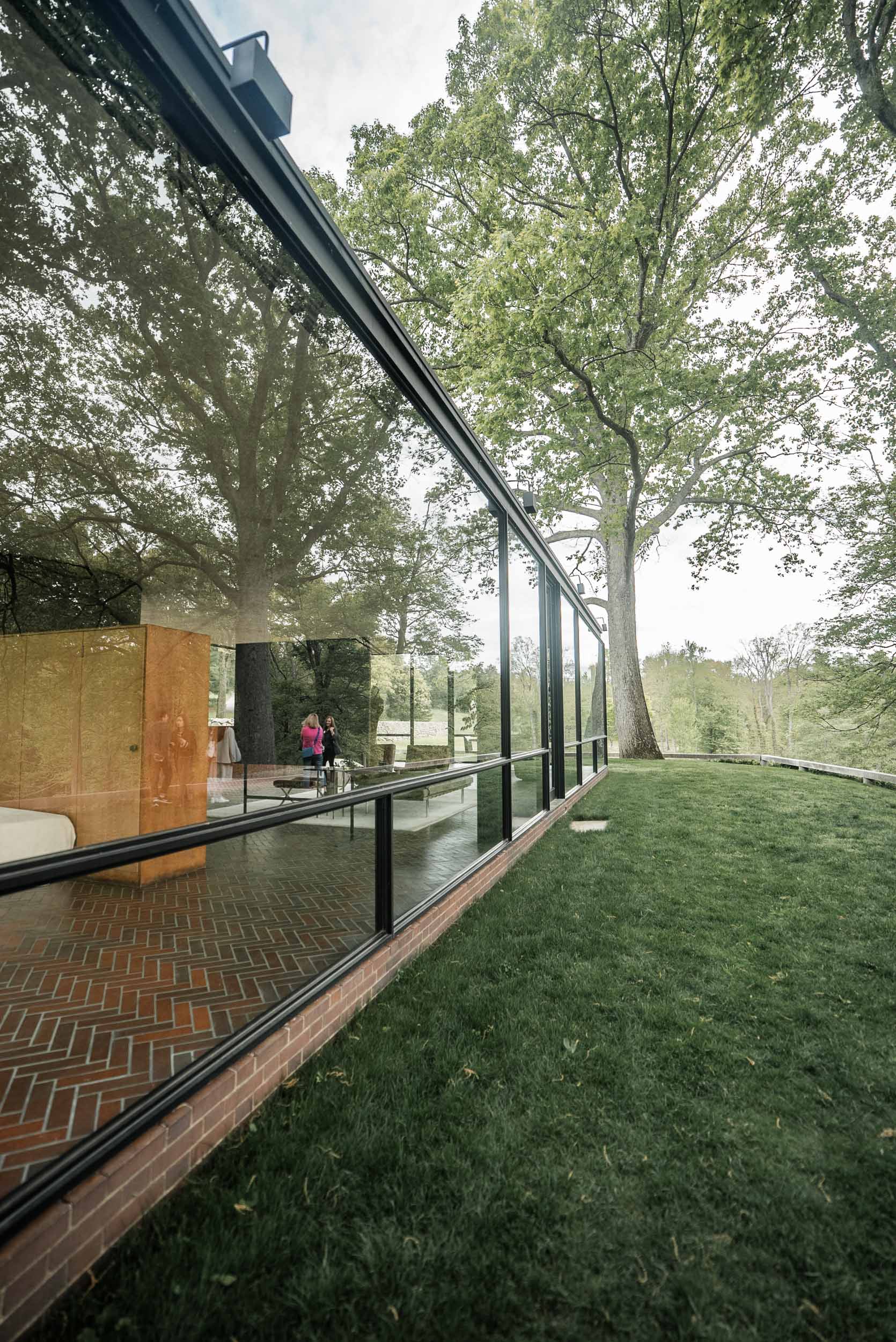
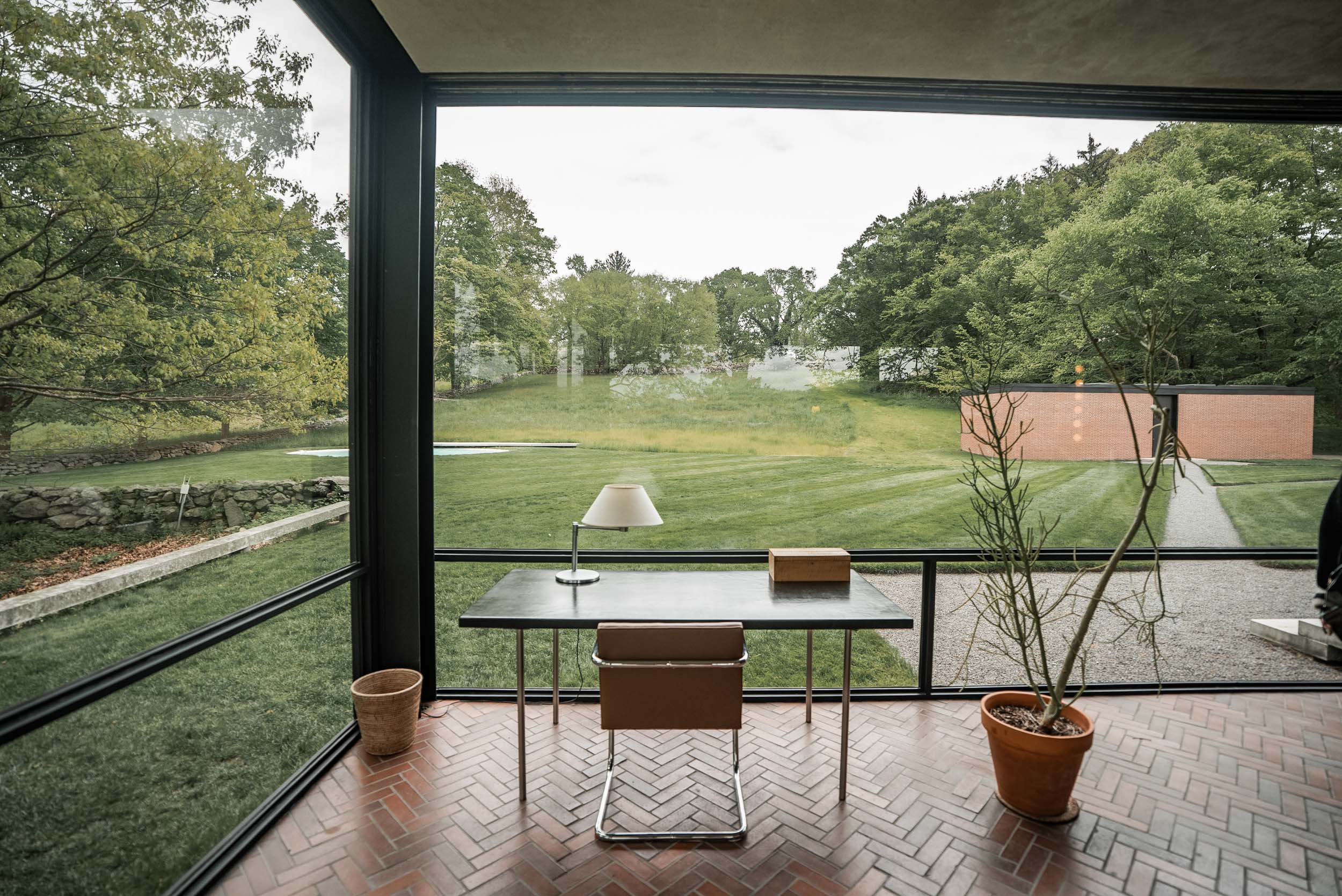
GLASS HOUSE STUDY
The Brick House, far right corner, viewed from the Glass House Study.
FURNITURE:
1. Ludwig Mies van der Rohe – Writing table, 1930
2. Ludwig Mies van der Rohe – Brno tubular chair, 1929
3. Ludwig Mies van der Rohe – Stool, 1930
DECOR:
1. Walter von Nessen – Swing-arm table lamp, 1927
2. Tiger maple box – American, 19th century
& currently, there’s a pencil cactus plant.
3. THE BRICK HOUSE
The Brick House, known as the “Guest House,” serves as a retreat for Johnson and his partner David Whitney.
Learn more about the Brick House Restoration HERE.
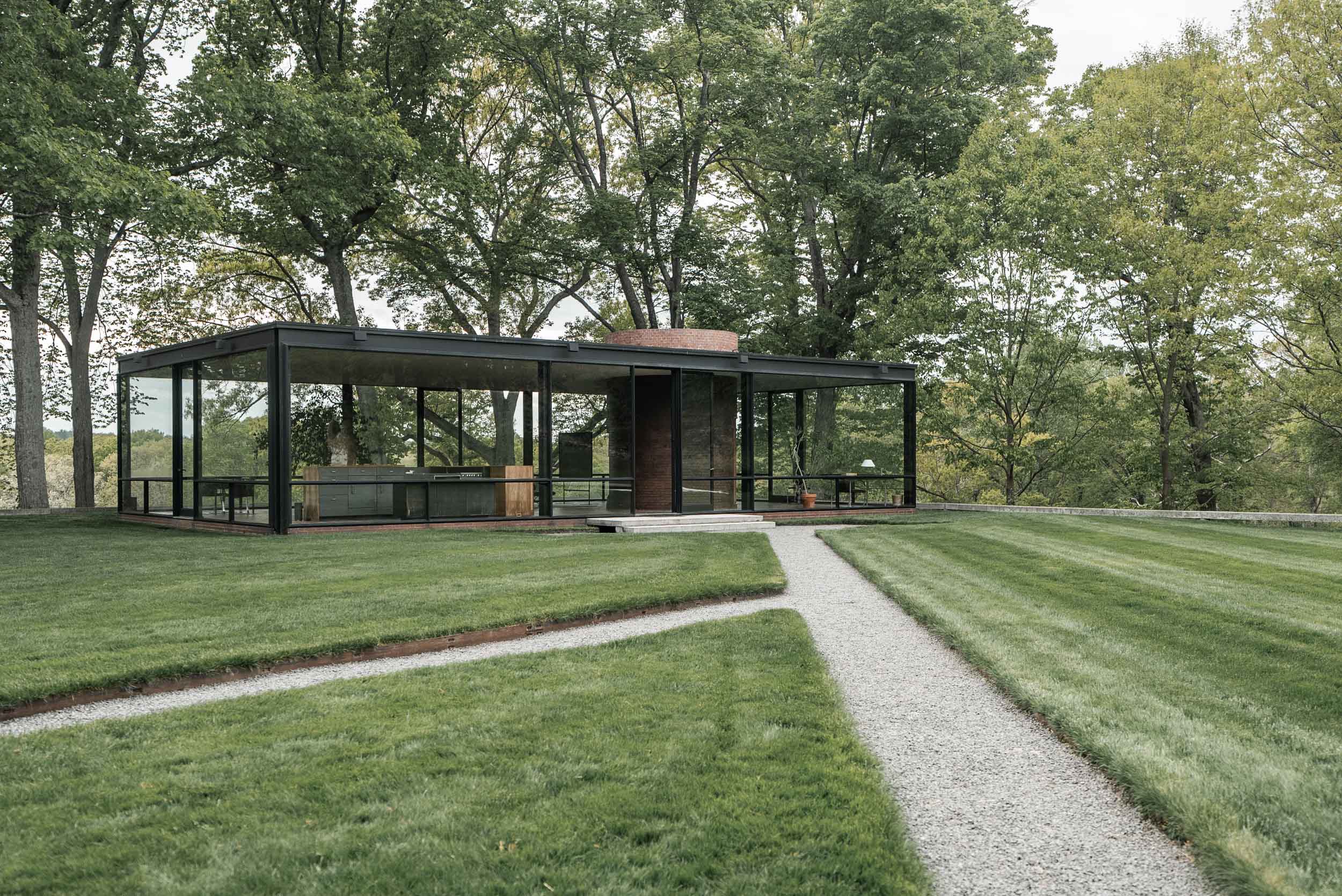
The Glass House, viewed from the Brick House main door entrance
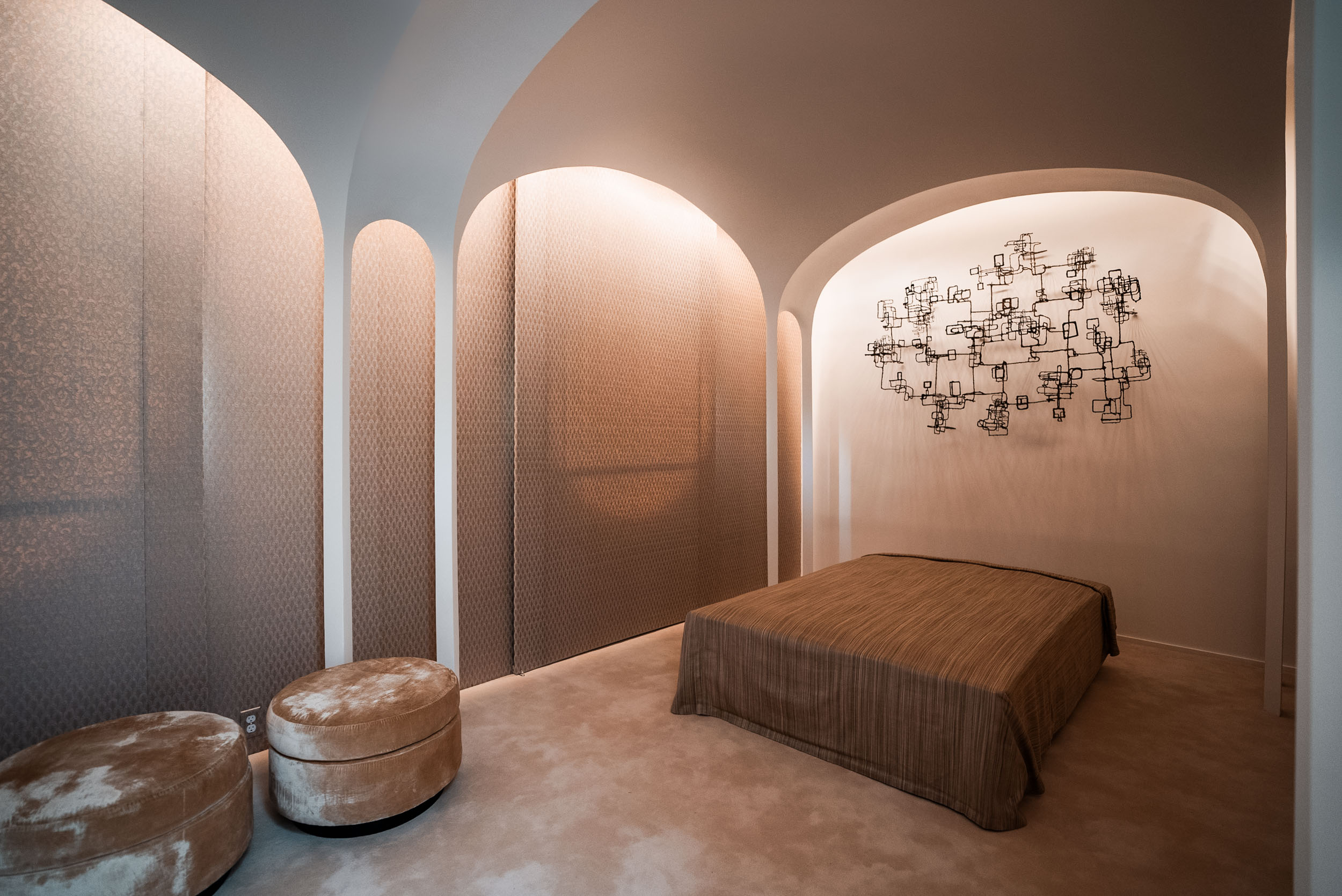
bedroom
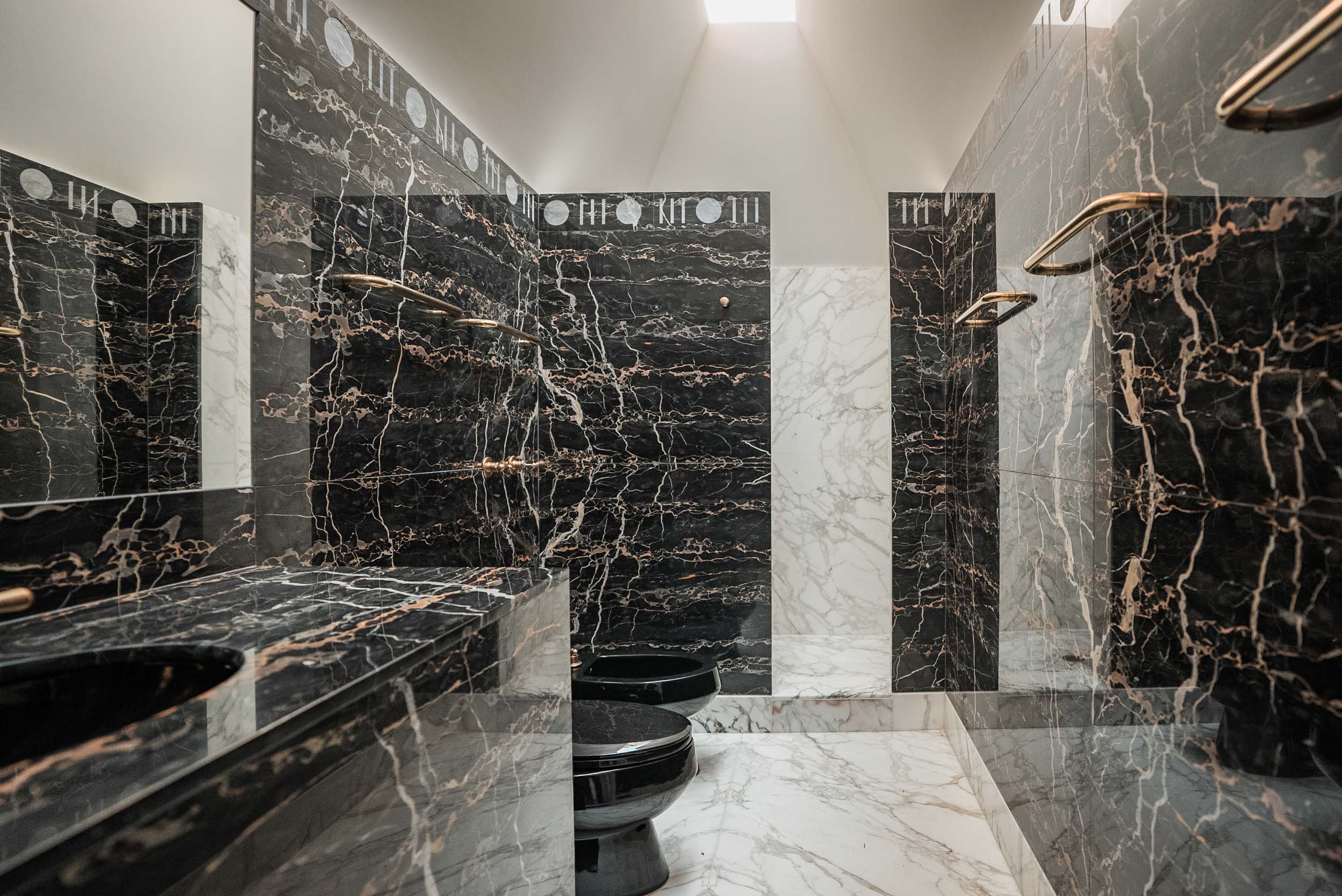
bathroom

skylight ceiling inside the bathroom
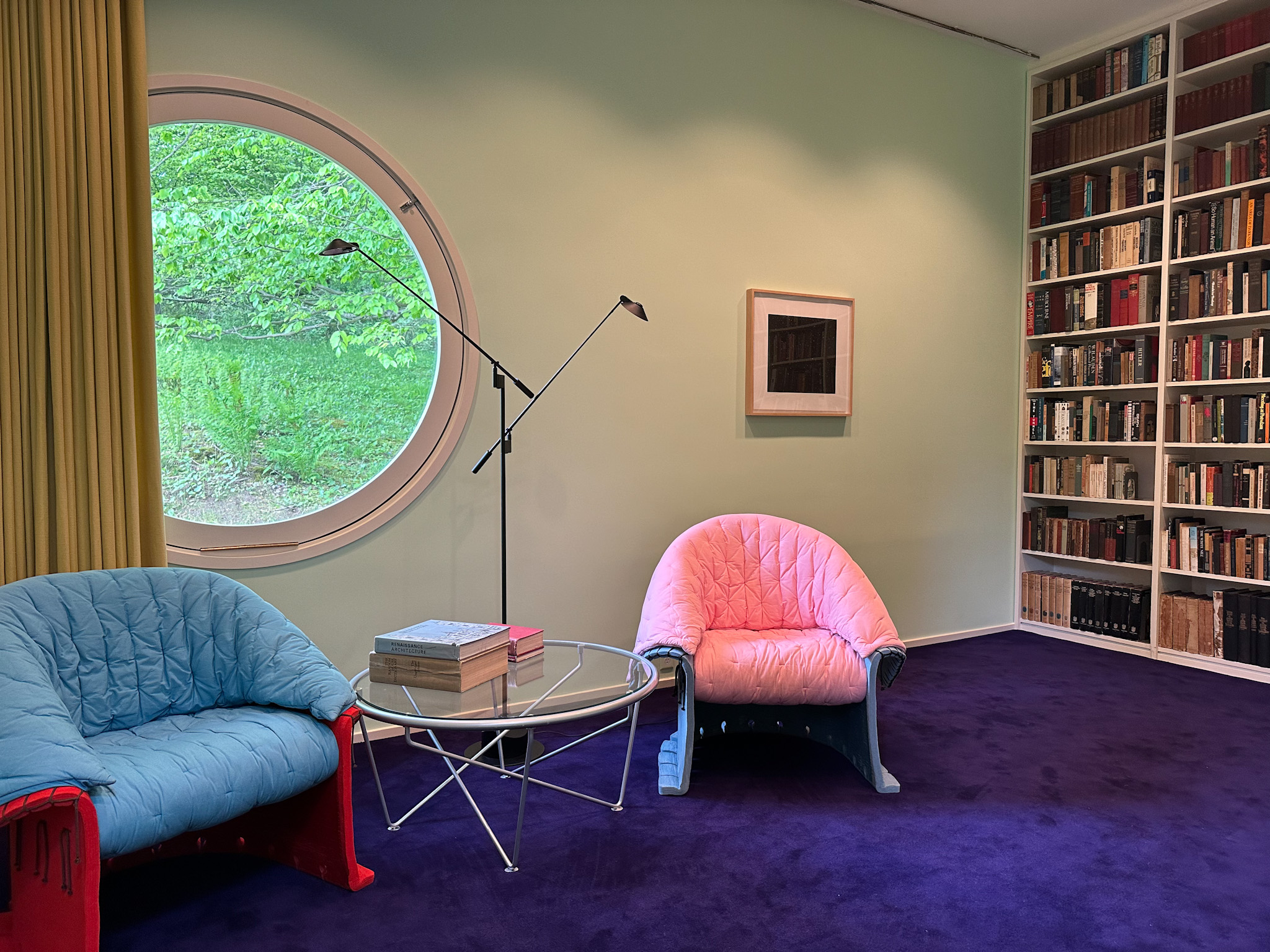
reading room
4. OTHER STRUCTURES ON THE ESTATE
-
Pavilion in the Pond, 1962
-
Painting Gallery, 1965
-
Sculpture Gallery, 1970
-
Studio, 1980
-
Ghost House, 1984
-
Monument to Lincoln Kirstein, 1985
-
Da Monsta, 1995
-
Vernacular Buildings

